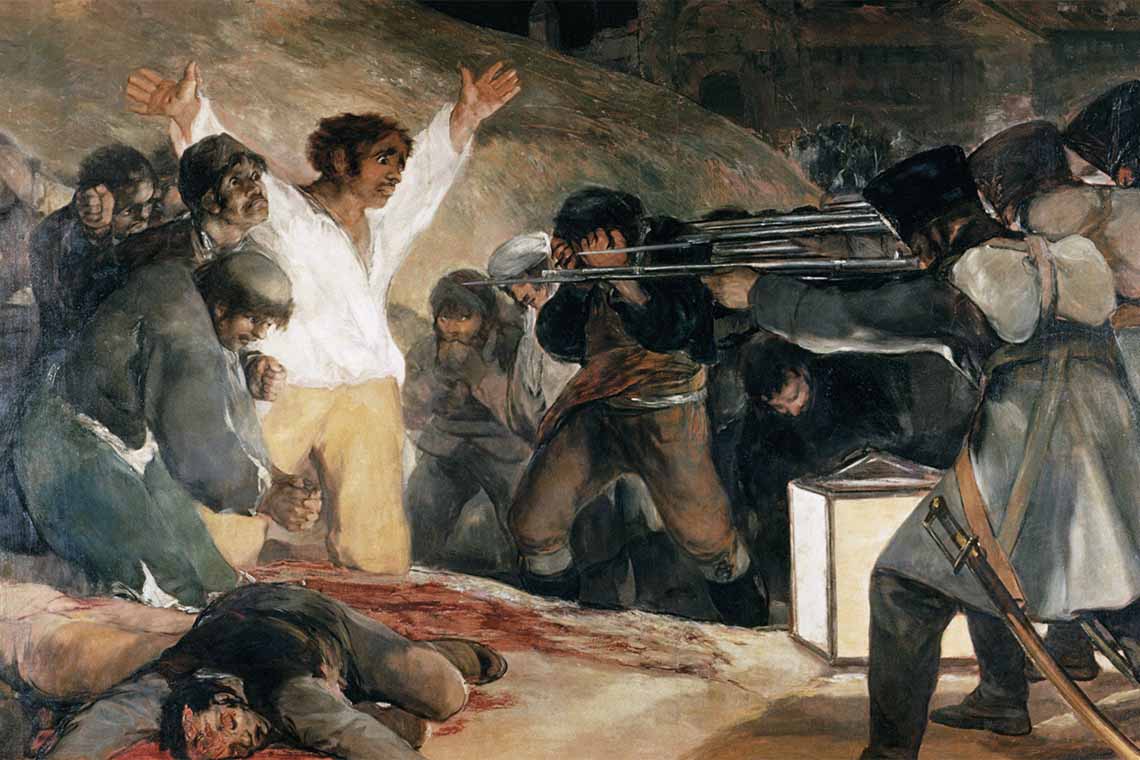With Canvas fast approaching its 20th anniversary, this is without doubt the hardest editorial I have ever had to write. Thousands of innocent people already dead, many more wounded and maimed, hundreds of thousands losing their loved ones, homes and livelihoods as the carnage in Palestine continues. Amid these daily scenes of unbelievable horror and trauma, we must all look at ourselves and ask what we can do, especially those of us working in arts and culture. “Art is hope”, “Art is inspiration”, “Art is uplifting”. We know this to be true intellectually, but how practically relevant can art really be in such agonising times as now?
Of course art is a force for good, but throughout history it has also been an expression of anguish and suffering. Artists have never disregarded moments of pain in the world around them. Whenever I see an artwork created during periods of war and strife, I take time to contemplate how the artist felt and what the subjects in the piece must have gone through. One particular painting that comes to mind right now is Francisco Goya’s 1814 masterpiece, The Third of May 1808. I was only five years old when my parents took me to the Museo del Prado in Madrid and although I can’t remember now what other artworks I saw at the time, I have never forgotten the depiction of a terrified man in a white shirt with his hands raised to the sky and surrendering to a firing squad about to shoot him. It’s an image more relevant than ever in the current onslaught against innocent civilians in Gaza.
The documentation of conflict comes in many shapes and forms, but art offers a unique opportunity to create the many shades of grey and nuance required to tell what are often complex and disturbing stories. I recall Mona Hatoum’s brilliant and thought-provoking exhibition Interior Landscape at the Fondazione Querini Stampalia in Venice in 2009, when she used everyday domestic objects to depict the displacement of the Palestinian people during the Nakba. Calm, measured and subtle, but as powerful as any portrayal of bullets and bombs.
As an art publisher, my job is to shed light on the creative aspects of our region and promote its culture and heritage through the artists we admire and appreciate. To show the beauty, but also to present the other side of the coin in a balanced and considered way. At a time when so much of the global media is intent on ignoring voices from Palestine and elsewhere when these do not fit the prevailing skewed Western narrative, our role as an international publication is more vital than ever. We shall continue to promote and extol the cultural values, contribution and importance of the nation of Palestine. More broadly, as we have for almost two decades now, we shall endeavour to stay true to our principles and always stand for honesty, fairness and justice.
We stand with Palestine.
This feature first appeared as an editorial letter in Canvas 110: It’s Electrifying



